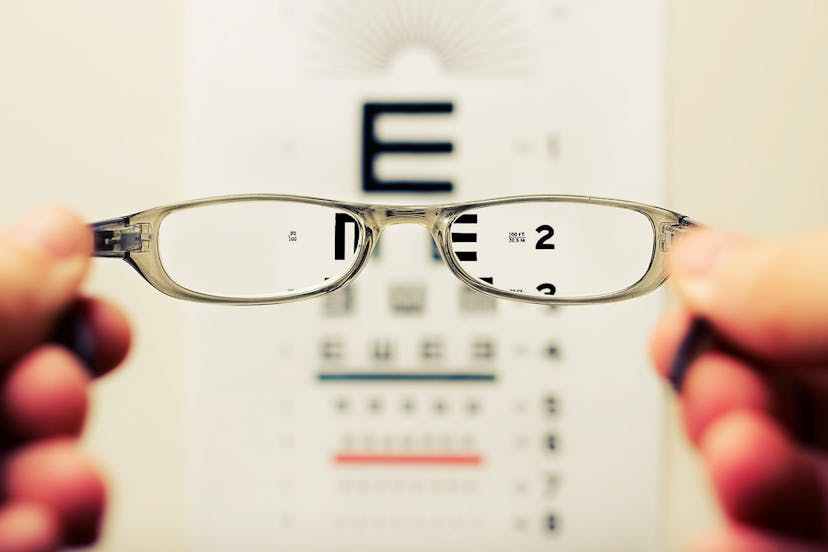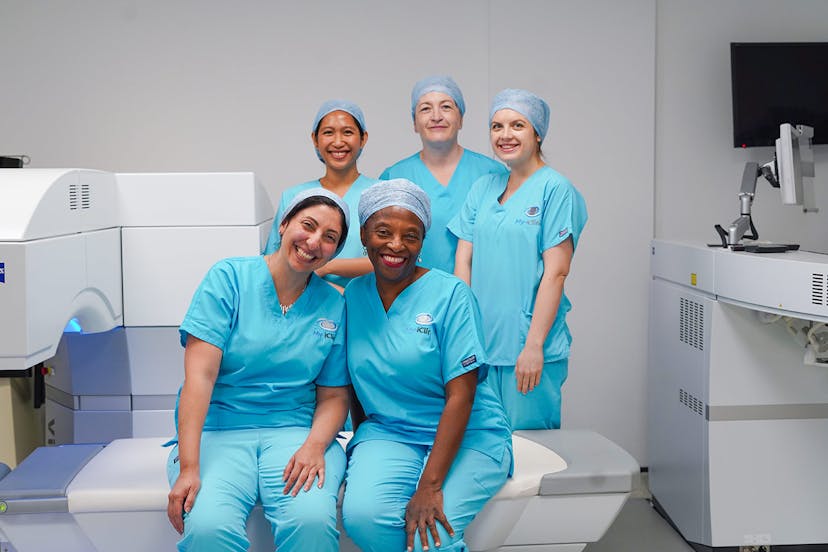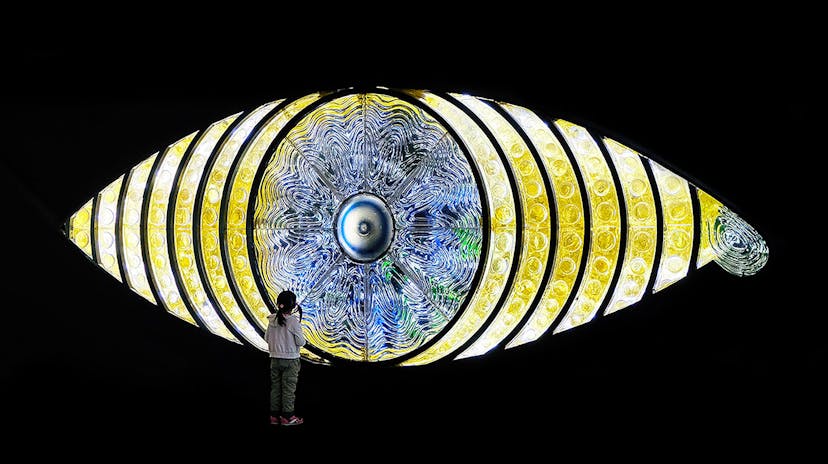
The Power Of Prisms and Occlusion Therapy In Vision Rehabilitation
Prism and occlusion therapy represent essential components of vision rehabilitation, particularly in the treatment of binocular vision disorders and amblyopia. Prisms are optical devices that alter the path of light, redirecting it to compensate for deficiencies in visual alignment or coordination. By strategically placing prisms in eyeglasses or lenses, clinicians can manipulate the visual field, helping patients achieve binocular fusion and improve depth perception.
Occlusion therapy, on the other hand, involves the temporary blocking or occlusion of one eye to encourage the use and development of the weaker eye, particularly in cases of amblyopia or "lazy eye." By covering the stronger eye with an adhesive patch or opaque lens, clinicians stimulate visual input to the amblyopic eye, facilitating neural connections and strengthening visual acuity over time.

Both prisms and occlusion therapy are integral components of vision rehabilitation programs, tailored to individual patient needs and goals. Through precise diagnostic evaluation and therapeutic intervention, clinicians aim to optimise visual function, enhance binocular vision, and promote overall visual health and wellness.
A Little History
The use of prisms in vision correction dates back centuries, with early evidence of their application found in the works of ancient Greek scholars such as Ptolemy and Euclid. However, it was the pioneering work of Sir Isaac Newton in the 17th century that laid the foundation for modern understanding and utilisation of prisms in optics. Newton's groundbreaking experiments with light refraction led to the development of prism lenses, which later became instrumental in diagnosing and correcting various visual abnormalities.
Occlusion therapy, on the other hand, traces its roots to the early 18th century when French ophthalmologist Louis Augustin Guillaume introduced the concept of covering one eye to treat strabismus and amblyopia. Guillaume's innovative approach, which involved the temporary occlusion of the stronger eye to promote visual development in the weaker eye, marked a significant advancement in the field of vision rehabilitation. Over time, occlusion therapy evolved with advancements in ophthalmic technology and clinical practice, becoming a cornerstone of modern treatment protocols for binocular vision disorders and amblyopia.
How Does It Work?
Both prisms and occlusion therapy are clinically proven methods for treating certain vision problems, particularly binocular vision disorders and amblyopia.
Prisms are effective in aligning and coordinating the eyes, improving binocular vision and depth perception in patients with conditions such as strabismus (misalignment of the eyes) or diplopia (double vision). They work by altering the path of light entering the eyes, redirecting it to compensate for visual abnormalities and promoting the fusion of the images perceived by each eye.
Occlusion therapy, meanwhile, has been widely used for decades to treat amblyopia, commonly known as "lazy eye." By temporarily covering the stronger eye, occlusion therapy encourages the weaker eye to work harder and develop stronger visual acuity. This approach stimulates neural connections in the brain, promoting the improvement of vision in the amblyopic eye over time.
As for the number of people treated in the UK every year for these problems, it's challenging to provide an exact figure as it can vary depending on factors such as population demographics, access to healthcare, and prevalence of vision disorders. However, it's estimated that tens of thousands of individuals in the UK receive treatment for binocular vision disorders and amblyopia annually, with prisms and occlusion therapy being among the standard treatment options offered by eye care professionals and specialists.

How Long Does It Take To Be Effective?
The effectiveness of prisms and occlusion therapy can vary depending on factors such as the severity of the underlying condition, the age of the patient, and their compliance with treatment protocols. In general, improvement in visual symptoms and function may be observed within weeks to months of initiating therapy, but the full extent of the treatment's effectiveness may take several months to years to achieve.
For prisms used to correct binocular vision disorders or diplopia, patients may experience immediate relief of symptoms such as double vision once the prisms are properly prescribed and fitted. However, it may take some time for the eyes to adapt fully to the prism-induced changes, with visual stability and comfort improving gradually over time.
In the case of occlusion therapy for amblyopia, visual improvement typically occurs more gradually, as the brain needs time to rewire and strengthen connections to the weaker eye. Patients may begin to notice improvements in visual acuity and depth perception after several weeks or months of consistent occlusion therapy, but optimal outcomes often require continued treatment and monitoring over an extended period, especially in younger patients whose visual systems are still developing.
Advances In Technology
Advances in technology have revolutionised the field of vision therapy, offering new tools and techniques to enhance the effectiveness and accessibility of treatments such as prisms and occlusion therapy.
One significant advancement is the integration of digital technology into vision therapy exercises. Interactive computer-based programs and virtual reality systems now allow for more engaging and customised vision training regimens, offering patients a more immersive and interactive experience. These digital platforms can simulate real-world scenarios, providing targeted visual stimuli to promote binocular vision and depth perception in a controlled and adjustable environment.
Furthermore, the development of wearable devices and smart technologies has expanded the possibilities for vision rehabilitation outside of clinical settings. Wearable vision aids, such as augmented reality glasses and head-mounted displays, can incorporate prism lenses and occlusion features to deliver personalised vision correction and training on the go. These portable devices empower patients to engage in vision therapy exercises in their everyday activities, promoting continuous improvement and integration of visual skills into daily life.

Additionally, advancements in imaging technologies, such as optical coherence tomography (OCT) and functional magnetic resonance imaging (fMRI), have provided researchers with valuable insights into the underlying mechanisms of vision disorders and treatment responses. These non-invasive imaging techniques allow for detailed assessment of ocular structures and brain activity, enabling clinicians to better understand individual variations in visual function and tailor treatment strategies accordingly.
Overall, technological innovations continue to push the boundaries of vision therapy, offering more precise, personalised, and accessible solutions for patients with binocular vision disorders and amblyopia. As technology continues to evolve, the future of vision rehabilitation holds promise for even greater advancements in improving visual outcomes and enhancing the quality of life for patients worldwide.
What Now?
Experience the future of vision therapy at My-iClinic, where cutting-edge technology meets personalised care. Our team of experienced eye care professionals specialises in advanced treatments such as prisms and occlusion therapy, tailored to meet the unique needs of each private patient. Take the first step towards clearer vision and improved quality of life by scheduling a consultation with us today. Discover the difference that innovative technology and expert guidance can make in your journey towards optimal visual health and rehabilitation. Your vision is our priority at My-iClinic.
Find out more by Speaking to our team









